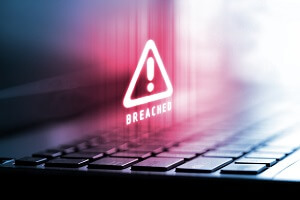The number of records involved in government data breaches continues to climb. According to a recent report by Comparitech, the average number of government records affected per branch increased from 17,400 in 2019 to 42,097 in 2020. In 2022, this number exceeded 71,000.
No law enforcement agency or police department is immune to the effects of a data breach. When a breach occurs, it can cause significant reputational damage, lost proprietary knowledge and major remediation expenses.
As government data breaches pose a massive threat to U.S. government entities, it is essential to take the necessary steps to prevent cyberattacks. Explore this guide to gain insight as to how data breaches occur and what strategies and policies to implement to prevent them.
How Data Breaches Happen
 When a data breach occurs, it exposes confidential, protected or sensitive information to an unauthorized person. All levels of law enforcement can be affected, from the smallest police departments to the largest government agencies. In addition, law enforcement could potentially put others at risk if they are not properly protected.
When a data breach occurs, it exposes confidential, protected or sensitive information to an unauthorized person. All levels of law enforcement can be affected, from the smallest police departments to the largest government agencies. In addition, law enforcement could potentially put others at risk if they are not properly protected.
Data breaches generally occur due to one of two weaknesses: technology or user behavior. It is often assumed that a data breach is caused by an outside hacker, but this is not always the case. Breaches can also occur due to a mistake or oversight by an individual within an organization. For example, an employee could accidentally open an email containing malicious software.
A data breach can also occur when a device containing confidential information is lost or stolen. When devices are left unlocked or information unencrypted, anyone can gain access to the device or information. There is always a risk that an outside party could attack a law enforcement system to gather information from an individual or network.
How to Prevent Data Breaches
There are many ways that government entities can reduce their risk of data breaches. Consider implementing the following best practices in your law enforcement agency:
1. Limit Access to Sensitive Data
In decades past, all employees within an organization had access to the same files and information. With the growth of online scams and fraud, it is more important than ever for law enforcement to limit who has access to their most valuable data.
Records should always be properly partitioned to ensure that only individuals that require access to certain information can access it. This can be achieved through the use of passwords, encryption and similar security methods.
2. Warn Against Social Engineering
While there has been much information spread about social engineering over the last decade, many individuals continue to fall for these traps. Social engineering is a type of manipulation technique that exploits human error to gain unauthorized access to information or other valuables.
For example, an employee may receive an email that looks like it came from someone within the organization requesting that the staff member change his or her password. This is a common scam to gain access to the employee’s files.
3. Establish Clear Cybersecurity Procedures
It is important for all employees to understand how to prevent data breaches by following proper cybersecurity procedures and policies. Provide regular staff training to ensure that the workforce is up to date on the latest cyber threats, such as ransomware, malware and phishing attacks.
Law enforcement agencies should also have protocols for reporting and responding to security incidents. It may be necessary to modify these procedures and policies over time as new risks are identified.
4. Use Federal Grant Funds for Improvements
 Police departments, law enforcement agencies and other public safety organizations have the opportunity to apply for grants that could give them funding for organization-wide improvements.
Police departments, law enforcement agencies and other public safety organizations have the opportunity to apply for grants that could give them funding for organization-wide improvements.
Many law enforcement entities operate on a strict budget, leaving little wiggle room for technological updates. By applying for federal grants, these organizations can get funding to improve their digital infrastructure and reduce their risk of data breaches.
5. Monitor Infrastructure with Security Tools
Today, law enforcement organizations can discover a wide range of advanced network monitoring and cyber threat detection tools that can help them quickly identify and block possible intrusions.
When cyber threats are found, these tools instantly alert IT security staff who can then start the process of investigation and mitigation. Having proper backup and recovery tools is also important in the event that a data breach results in all data being maliciously deleted or corrupted.
Schedule a Consultation with CPI OpenFox
Data breaches can be costly and put law enforcement agencies at risk for reputational harm, financial losses and more. With CPI OpenFox, law enforcement operations can be significantly improved.
The OpenFox Suite of law enforcement software includes innovative products designed to optimize information sharing and reporting, while also streamlining departmental processes. Learn more about law enforcement software and how it can help prevent government data breaches by scheduling a consultation with CPI OpenFox.


